-
Recent Posts
- Trump’s “Big Beautiful Bill” Is a Grotesque Giveaway to Fossil Fuel Billionaires While Adding $3.3 Trillion to Nation’s Debt
- Senator Chris Murphy Charges that Trump “Has Opened a Channel for Bribery”
- Congressman Casten: Trump’s Assault on the Rule of Law Is Causing Capital Flight Out of U.S. by Foreign Investors
- Trump’s Approval Rating Drops to 80-Year Low; IMF Says U.S. Tariffs Now Exceed the Highs During the Great Depression
- Nasdaq Has Lost More than 3,000 Points Since Trump’s First Full Day in Office in 2025; the Pain Has Barely Begun
- The Bond Crisis Last Week Was a Global No-Confidence Vote in U. S. President Donald Trump
- Trump’s Tariff Plan Guts $5 Trillion in Stock Value in Two Days; Senator Warren Calls for Emergency Action Before Markets Open on Monday
- Trump’s Attacks on Big Law, Universities, and the Media Have a Common Goal: Silence Dissent Against Authoritarian Rule
- Trump Administration Gives All Clear to Laundering Money through Shell Companies and Bribing Foreign Officials
- Four Megabanks on Wall Street Hold $3.2 Trillion in Uninsured Deposits – Which May Explain Senator Schumer’s Pivot to the GOP to Stop a Government Shutdown
- Here’s What Came Crashing Down Yesterday for Trump’s “Genius” Guy, Elon Musk: Tesla Stock, Access to Twitter (X), His Years of Secret Calls with Putin
- After Banning the Associated Press, Trump Is Now Targeting Specific Journalists That He Wants to See Fired
- Closely Watched Atlanta Fed Model Predicts Negative U.S. Growth in First Quarter
- Trump’s Gangster Diplomacy Makes Front Page Headlines Around the Globe
- Who Benefits Alongside Elon Musk If He Succeeds in Killing the CFPB: the Megabanks on Wall Street that Underwrite His Tesla Stock Offerings
- In Trump 1.0, the State Department Used Taxpayer Money to Publish a Book Elevating Elon Musk to a Superhero; It Was Funded by USAID, the Agency Musk Wants to Quickly Shut Down
- News Host Joy Reid Raises Threat of Trump Selling U.S. to Putin; Ten Days Later Her Show Is Cancelled
- Elon Musk’s DOGE Appears to Be Violating a Court Order; It Has Taken Down Hundreds of YouTube Videos that Educate Americans on How to Avoid Being Swindled
- Barron’s Releases Audio of Jamie Dimon Cursing Out His Workers at a Town Hall, as Dimon Plans to Dump Another One Million JPM Shares
- There’s One Federal Investigative Agency that Neither Trump nor Elon Musk Can Touch: It Just Opened an Investigation into DOGE
- Elon Musk’s Companies Were Under Investigation by Five Inspectors General When the Trump Administration Fired Them and Made Musk the Investigator
- Donald Trump Gives the Greenlight to Goldman Sachs and JPMorgan Chase to Return to Bribing Foreign Officials
- After Tech Geeks Built a Back Door to Loot Billions from FTX, Republicans Refuse to Investigate What Elon Musk’s Tech-Squad Did Inside the U.S. Treasury’s Payment System
- Former Prosecutor, Now U.S. Senator, Informs Tesla That CEO Musk May Be Violating Federal Law and to “Preserve All Records”
- Trump’s Hedge Fund Guy Is Now Overseeing the U.S. Treasury, IRS, OCC, U.S. Mint, FinCEN, F-SOC, and the Consumer Financial Protection Bureau
- As Elon Musk Begins Shutting Down Payments to Federal Contractors, a Strange Money Trail Emerges to His Operatives Inside the U.S. Treasury’s Payment System
- JPMorgan Chase Charged by Yet Another Internal Whistleblower with Cooking the Books
- We Asked Google’s AI Search Model, Gemini, Questions About the Fed and Wall Street Megabanks: It Got the Answers Dead Wrong
- With Trump and Melania’s Crypto Coins Likely to Raise Legal Challenges, Why Didn’t Trump Fire the SEC’s Inspector General in His Purge of IGs?
- Fossil Fuel Industry Could End Up Paying Tens of Billions for LA Wildfires and Deceiving the Public on Climate Change for Decades
- It’s Being Called the Biggest Grift by a President in U.S. History: Trump and First Lady Launch their Own Crypto Coins
- Trump Plans to Install a Fracking CEO to Head the Energy Department and Declare a National Emergency on Energy to Gain Vast Powers
- Fossil Fuel Money Played a Role in the Los Angeles Fires and the Push to Install Pete Hegseth as Secretary of Defense
- When It Comes to Wealth Retention in Retirement, Concrete May Be the New Gold
- Wall Street Watchdog Warns “Clock Is Ticking on a Coming Catastrophic Financial Crash”
- Wall Street Is Sending the Same Message to Americans on Fossil Fuel Financing that It Sent on Cigarettes: Drop Dead
- In a Six-Week Span, this Dark Pool with a Curious Past Traded 3.7 Billion Shares
- Wall Street’s Lobby Firm Hired Eugene Scalia of Gibson Dunn to Sue the Fed for Jamie Dimon
- Postmaster General Louis DeJoy Made $561,051 in Compensation in 2024, as Mail Costs Spiked and Delivery Deteriorated
- Fed Chair Jay Powell Sends a Bold Message to Trump and Tanks the Dow by 1123 Points
- The Head of Fixed Income at T. Rowe Price Makes the Scary Case for the 10-Year Treasury to Spike to 6 Percent
- $663 Billion in Cash Assets Have Gone Poof at the Largest U.S. Banks
- Donald Trump to Ring Bell at New York Stock Exchange Today as Hit List Posters Appear in Manhattan Targeting Wall Street CEOs
- Trump Has a Slush Fund to Prop Up the Dollar – Will He Use It to Prop Up Bitcoin Instead?
- A CEO Assassination; a Billionaire Heiress/NYPD Commissioner; a Secret Wall Street Spy Center – Here’s How They’re Connected
- Despite More than 1600 Tech Scientists Signing a Letter Calling Crypto a Sham, Trump Names a Crypto Cheerleader for SEC Chair
- The Fed Rings a Warning Bell: Hedge Funds and Life Insurers Are Reporting Historic Leverage
- Trump’s Nominee for FBI Director, Kash Patel, Has Businesses Financially Intertwined with Trump
- Donald Trump Is at Risk of Getting Named in a Fossil Fuels Conspiracy Lawsuit
- Trump Is Having Difficulty Getting a Lawyer to Accept the Nomination for SEC Chair: Here’s Why
Search Results for: Federal Reserve
Jerome Powell’s Fed in Two Frightening Charts
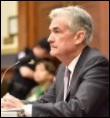
By Pam Martens and Russ Martens: May 18, 2022 ~ The March 15-16 minutes of the Federal Open Market Committee (FOMC) of the Federal Reserve show that there was agreement, given “elevated inflation and tight labor market conditions,” that the Fed needed to take decisive action to shrink its balance sheet, with FOMC participants reaffirming “that the Federal Reserve’s securities holdings should be reduced over time in a predictable manner primarily by adjusting the amounts reinvested of principal payments….” But Jerome Powell’s Fed did not actually announce a specific plan to shrink its balance sheet until May 4 and stated at that time that the plan would not go into effect until June 1 – almost three months after the FOMC indicated that the Fed should take decisive action. As a result of this stalling, the Fed’s balance sheet has remained at the $9 trillion level since its March 15-16 FOMC … Continue reading
Warren Buffett Is Taking a Flyer on $3 Billion of Citigroup’s Stock — After It Loses 40 Percent in a Year

By Pam Martens and Russ Martens: May 17, 2022 ~ Tongues are wagging this morning about the 13F filing by Warren Buffett’s Berkshire Hathaway. The filing shows that in the first quarter of this year, Berkshire Hathaway bought 55,155,797 shares of Citigroup stock for its portfolio, which came to the tidy sum of $2.9 billion as of March 31, 2022. The tongue-wagging stems from the fact that over the past 52 weeks, Citigroup’s stock has lost 40 percent of its value, with no sign that the bleeding will stop anytime soon. Citigroup closed at $53.40 a share on March 31. It closed yesterday at $47.46. That means that Buffett’s wager on Citigroup is down 11 percent or a loss of $327.6 million so far. Knowing Citigroup’s history, things are highly likely to go from bad to worse from here. As Wall Street On Parade reported just last Friday, Citigroup’s Stock Price … Continue reading
Citigroup’s Stock Price Is Still Down 84 Percent from the Year of Crash in 2008
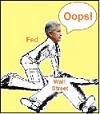
By Pam Martens and Russ Martens: May 13, 2022 ~ On January 2, 2008, the first trading day of the year that would become the biggest Wall Street crash since the Great Depression, Citigroup’s shares closed at $28.92. Yesterday, Citigroup’s shares closed at $4.66 (adjusted for the 1-for-10 reverse stock split the company did on May 9, 2011). That means that shareholders who have hung on to the stock for the past 14 years are still down 84 percent. In terms of assets, Citigroup is the third largest bank holding company in the U.S. with $2.29 trillion in assets as of December 31, 2021. (JPMorgan Chase and Bank of America rank first and second with $3.7 trillion and $3.2 trillion in assets, respectively, as of the same date according to the Office of the Comptroller of the Currency.) Despite the fact that Citigroup blew itself up in 2008 with off-balance-sheet subprime … Continue reading
Scandalized Dallas Fed Keeps It All in “The Family” with Appointment of Lorie Logan as President

By Pam Martens and Russ Martens: May 12, 2022 ~ Yesterday, Thomas Falk and Claudia Aguirre, who were co-chairing the Dallas Fed’s Search Committee, announced that they had found the ideal candidate to become the new Dallas Fed President. They said it was a person who would “understand the economic issues and needs of the residents of Texas, northern Louisiana and southern New Mexico,” the areas served by the Dallas Fed. Given that criteria, one might have suspected that their candidate would have some relationship with Texas or its neighboring states. But no. Falk and Aguirre selected a person who works 1500 miles from the Dallas Fed, Lorie Logan, the head of the trading desks for the New York Fed, the only one of the 12 regional Fed banks to have trading desks (one in New York near the New York Stock Exchange and one in Chicago near the futures exchange). … Continue reading
These Stock Patterns Are Impossible – Without Brazen Manipulation that the SEC Is Choosing to Ignore

By Pam Martens and Russ Martens: May 9, 2022 ~ Beginning in November of 2008, the Fed was allowed by Congress to manipulate the U.S. bond market through purchases of bonds with money it creates at the flick of an electronic button. The Fed calls this “Quantitative Easing” or QE. Beginning on September 17, 2019 – when overnight lending rates on repo (repo means repurchase agreements between financial institutions) touched 10 percent instead of the 2-1/2 percent that the Fed wanted the market to be at – the Fed began providing repo loans at “administered rates.” It did that by jumping into the repo market with both feet, proceeding to make trillions of dollars in cumulative loans to trading houses on Wall Street, at interest rates as low as 0.10 percent by the spring of 2020. During 2020, the Fed also artificially propped up money market mutual funds, commercial paper, Exchange … Continue reading
Powell Says Fed Doesn’t Have a Credibility Problem with the American People – Despite Gallup Poll Showing Lowest Confidence Since 2008 Financial Crisis
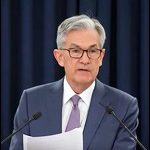
By Pam Martens: May 5, 2022 ~ At the Fed’s press conference yesterday, Federal Reserve Chair Pro Tempore Jerome Powell was asked by Mike McKee of Bloomberg Television a series of questions on monetary policy which ended with this: “Are you concerned about Fed credibility with the American people?” Powell answered the monetary policy questions but did not directly address the credibility issue. McKee then repeated the question, phrased as follows: “Do you think the Fed has a credibility problem?” Powell’s answer provides an alarming insight into with whom the Fed seeks to maintain confidence. Powell said this: Powell: “No. I don’t. A good example of why would be that—so in the fourth quarter of last year, as we started talking about tapering sooner and then raising rates this year, you saw financial markets reacting, you know, very appropriately. Not to bless any particular day’s measure, but the way financial markets—you … Continue reading
What You Can Expect to Hear at the Fed’s Press Conference Today
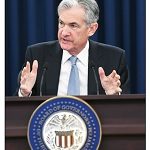
By Pam Martens and Russ Martens: May 4, 2022 ~ The Federal Open Market Committee (FOMC) will release its decision on hiking the Fed’s benchmark interest rate at 2:00 p.m. ET today, along with its plans for shrinking the Fed’s $9 trillion balance sheet. The announcement will be followed with Fed Chair Pro Tempore Jerome Powell holding a press conference at 2:30 p.m. ET. (Powell still awaits full Senate confirmation for a second term as Fed Chair, thus the designation “Pro Tempore.” Wall Street is expecting a 50-basis point rate hike (half of one percent), which would put the Fed Funds rate in a range of 0.75 to 1 percent. Wall Street does not like large interest rate increases from the Fed because five of the megabanks are sitting with a $200 trillion albatross of derivatives around their neck with questionable counterparties on the other side of a lot of those … Continue reading
Citigroup’s Role in “Flash Crash” in Europe Yesterday Is Reminiscent of Its “Dr. Evil” Trade in 2004

By Pam Martens and Russ Martens: May 3, 2022 ~ Yesterday the international newswire, Reuters, broke the story that the U.S. megabank, Citigroup, was responsible for a flash crash that plunged Sweden’s benchmark index, the OMX, by 8 percent at its low. The index later recovered to close with a loss of just under 2 percent. The plunge caused a rapid ripple effect that briefly spread to other European stock markets. Trading volume in Europe was lower than normal yesterday because the London Stock Exchange was closed for a banking holiday. (As detailed below, Citigroup previously exploited a low volume day in August 2004 in the European bond market.) Citigroup has confirmed its role in yesterday’s flash crash, releasing the following statement on Monday: “This morning one of our traders made an error when inputting a transaction. Within minutes, we identified the error and corrected it.” El Pais, a leading newspaper … Continue reading
Fed Chair Powell Telegraphs the Perfect Storm for Wall Street’s Megabanks: Rapid Rate Hikes Hitting $234 Trillion in Derivatives
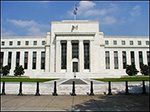
By Pam Martens and Russ Martens: April 25, 2022 The Federal Reserve (the Fed) is the central bank of the United States. It sets monetary policy, including control of the benchmark short-term interest rate known as the Federal Funds rate, or in Wall Street jargon, the “Fed Funds” rate. This is a key rate because it signals the rate at which overnight loans are made between financial institutions and the direction of interest rates in general. Unfortunately, over time, the Fed has also been granted a supervisory role by Congress over Wall Street’s megabanks alongside its ability to bail them out when its crony brand of supervision fails. There was an epic failure in the Fed’s supervision of the Wall Street megabanks in the leadup to the 2008 financial crash and the September 2019 repo blowup. In both cases, the Fed made trillions of dollars in cumulative loans at below-market interest … Continue reading
It’s Been More than Seven Months and Still No Investigative Findings on the Fed’s Trading Scandal

By Pam Martens and Russ Martens: April 21, 2022 On September 7 of last year, Wall Street Journal reporter Mike Derby broke the story that “Federal Reserve Bank of Dallas President Robert Kaplan made multiple million-dollar-plus stock trades in 2020, according to a financial disclosure form provided by his bank….” Kaplan was a sophisticated trader who previously worked at Goldman Sachs for 22 years, rising to the rank of Vice Chairman. His financial disclosure forms suggest that Kaplan maintained a trading relationship with Goldman Sachs, since he lists proprietary products created by “GS,” short for Goldman Sachs. It would be highly inappropriate for Kaplan to have a trading relationship with Goldman Sachs since it is a bank holding company supervised by the Fed. The strange thing about Derby’s reporting on Kaplan is that it didn’t capture the most scandalous aspect of Kaplan’s trading. According to Kaplan’s financial disclosure forms, he was … Continue reading

